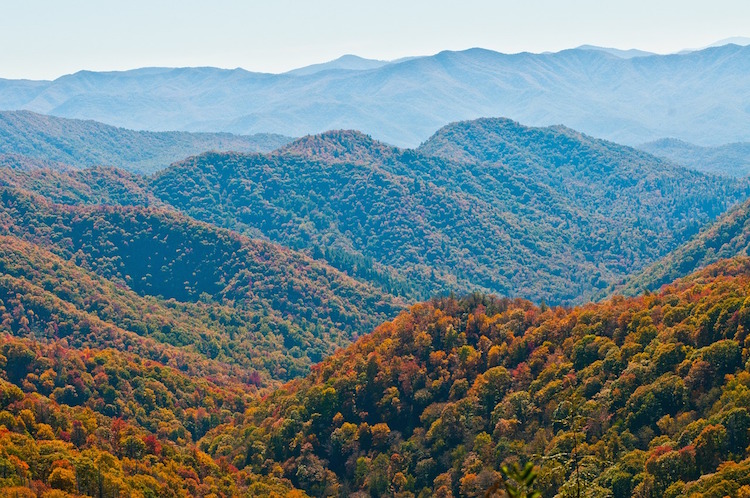This article describes the Appalachian Mountains. Lots of Pictures!

Great Smoky Mountains, North Carolina
The Birth of the Appalachians
480 million years ago the land masses of the world collided into a giant supercontinent called Pangea. As tectonic plates met one another, crashes of land shoved sheets of earth upwards to form the Central Pangean Mountains. This young mountain range was tall and mighty, with jagged peaks and rocky slopes. When Pangea began to break apart 175 million years ago, the Central Pangean Mountains split into the Scottish Highlands, the Little Atlas Mountains of Morocco, and the Appalachian Mountains of North America.
Hydrology
The Appalachian Mountains today are worn smooth by age and erosion. They stretch from Alabama to the southeastern corner of Canada and have 13 major regions. The Eastern Continental Divide lies along the Appalachian Mountains. A continental divide is a boundary that defines the direction of water flow in the region. To the east of the mountains, rivers flow into the Atlantic Ocean. On the westward side of the mountains, rivers flow to the Gulf of Mexico. The geography of the Appalachian Mountains also affects precipitation patterns. Clouds laden with rain break open as they pass over the peaks, making this region one of the wettest in the United States.
Green Mountains of Vermont
Effects of Glaciers
The lush forests of the Appalachian Mountains support plants and animals with unique histories. Long ago, glaciers extended as far south as Pennsylvania. Many plants and animals normally adapted to the cooler climate of the northern latitudes could not withstand the harsh conditions of this glaciatic invasion. Simply retreating southward, however, would leave many species in climates that were too warm. The cool alpine weather of the Appalachian Mountains became a refuge for Northern species seeking new homes. Although the glaciers have retreated since the last Ice Age, many of these cold-weather species still call the Appalachian Mountains home. Spruce-fir forests are one such souvenir of the last Ice Age. These rare ecosystems still exist on the highest peaks of the southern Appalachian Mountains and are one of the most endangered ecosystems in North America.

Mt. Katahdin, Maine
Challenges
Today these ancient mountains face threats from a myriad of sources. Since the early 1900s, parasites have changed the face of the forests of Appalachia. First, a fungus called chestnut blight destroyed iconic chestnut trees that were prized in the Appalachian Mountains. Since the 1950s, invasive insects from Europe have been attacking the evergreen trees of the endangered spruce-fir forests. Threats from industry, such as acid rain and the destruction of mountain peaks for coal mining, also challenge the health of this region's ecosystems. While the geology and ecosystems of the mountains were formed over millions of years of change, one thing is for certain: the Appalachian Mountains will continue to change in the years to come.
Related activities
Advertisement

